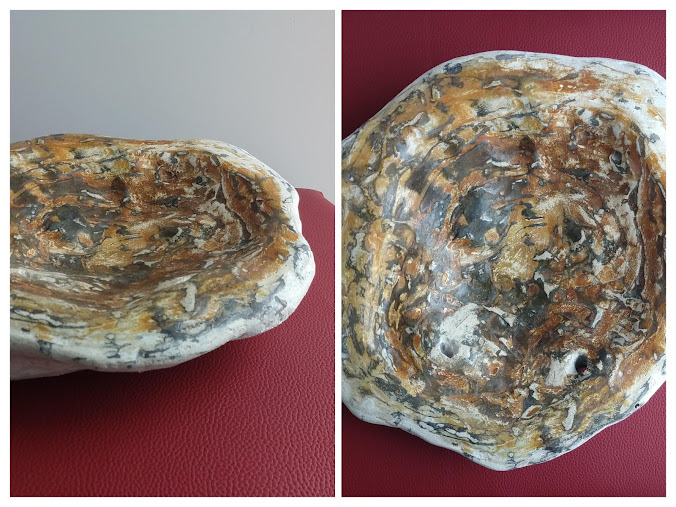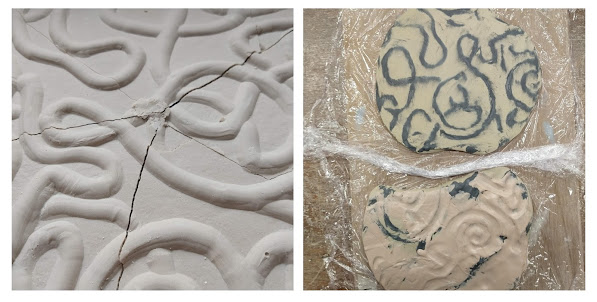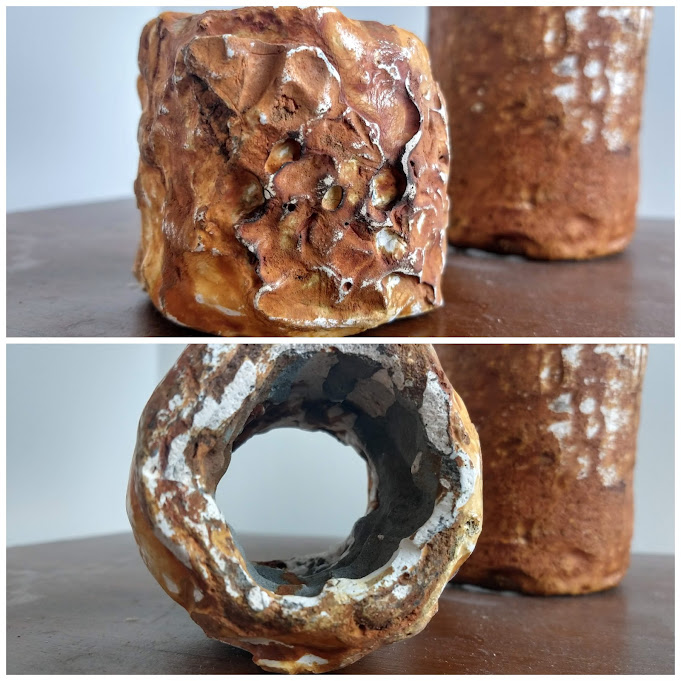Off to module 5, the final module of my MA in creative practice
All the experimentation and learning should draw to a close and I should start progressing towards working on expanding my body of work, where hopefully a lot of what I explored and discovered will be cemented in a cohesive series of sculpture. Through my research I am now able to define some criteria for my work which I deem important in order to achieve my aim to produce sculptures that convey complex sensual stimulation and entice the viewer, or, as I'd like to call my potential audiences, explorers, to use them and take something away for themselves. Attributes under the concept of tension and release (both in the formal/aesthetic sense and the emotional sense) that I'd like to reflect in my work could be calming. smooth, balanced, meditative, contrasting in texture, contradictory, surprising or satisfying. 'spinner in the works'






